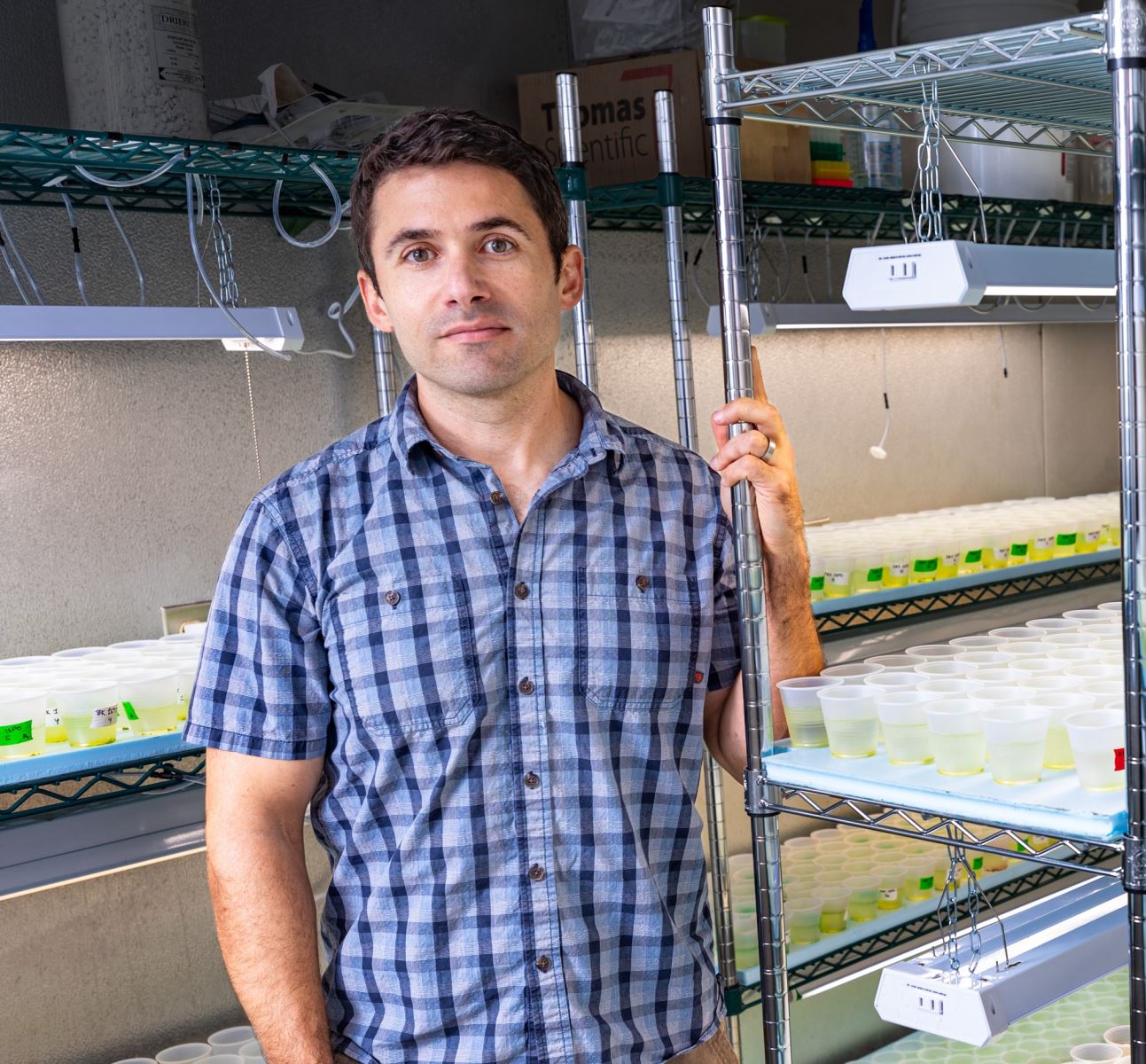
Over the last century, die-offs of animal populations, known as mass mortality events (or MMEs), have increased in frequency and magnitude. The scale of these events can be staggering: billions of dead fish, hundreds of thousands of dead mammals and birds and millions of tons of dead biomass.
More troubling, as the planet continues to warm, mass mortality events are expected to increase in frequency, if not magnitude, especially in aquatic systems.
But due to the relatively rare and unpredictable nature of MMEs, scientists don’t have a clear picture of how these events immediately impact ecosystems. This is particularly concerning because MMEs often affect predators that play vital roles in ecosystems.
A new paper published in Nature now provides a clearer picture of what happens to lake ecosystems after predator MMEs by chronicling an experiment involving freshwater fish. Of the quartet of co-authors, two are from the U of A: first author Simon Tye, a research assistant in the Department of Biological Sciences and recent alumnus, and senior author Adam Siepielski, an associate professor of biological sciences. Second and third authors include Samuel B. Fey, associate professor at Reed College, and Jean-Philippe Gibert, an assistant professor of biology at Duke University.
The work presented in the paper tested earlier predictions by the team based on mathematical modeling suggesting that predator die-offs should generate two simultaneous effects. The first is a top-down effect in that predator fish loss would lead to the proliferation of “consumer” crustacean zooplankton that eat phytoplankton and that had previously been predated by fish. The second is a bottom-up effect in that nutrient rich carrion from dead predators will fertilize the system and likely lead to the proliferation of phytoplankton “primary producers” at the base of the food web.
The Experiment: Give or Take a Fish
To better understand the ecological aftermath of mass mortality events, the researchers created small artificial lakes that contained a food web with three levels: phytoplankton, zooplankton and fish. They then implemented scenarios that either isolated or combined the effects of removing predators and adding predator carrion and monitored these food webs for several months.
 |
| Adam Siepielski |
By and large, the artificial lakes responded to predator MMEs as predicted by the team´s earlier mathematical modeling: with appreciable increases in zooplankton consumer biomass and total producer biomass. But this is not necessarily a good thing, since MMEs can sometimes introduce so much decaying biomass into the water that a harmful algal bloom can occur.
“Predators are important for ecosystem function,” Siepielski noted, “and, rightfully so, biologists are concerned about the loss of predators. Many studies have sought to understand what happens when predators are ‘lost,’ and they do so by experimentally comparing a system with and without a predator present. But, that is not what happens in nature. Predators do not simply disappear, they decompose.”
“Letting the predators die and then decompose was a unique and important part of our study,” he continued. “In their death, they are providing lots of nutrients that other organisms used. Intellectually, you know it happens that way, but no one has really looked into it in the way we did. And when you do, you find something new.”
Experimentally confirming an existing theoretical framework is also in and of itself useful.
Tye explained that “our findings reaffirm foundational concepts in ecology and also suggest that predicting ecosystem responses to these events may be possible since they leave a distinct signature.”
Gibert, a theoretician, added, “Witnessing these experimental systems behave as predicted by our previous theoretical work was remarkable. It means that we now understand enough about these processes to tell not just what has happened, but what might happen. It’s the ecologist’s holy grail.”
While the subject of accelerating MMEs is cause for serious concern, Siepielski seeks to find the upside. “I think it’s reassuring for scientists, and I would hope the general public as well, that we can use decades of established work to understand how emerging types of extreme events affect ecosystems. Freshwater ecosystems like the lakes we study are hugely important, but also imperiled.”
“A large goal of 21st century ecology is being able to better anticipate ecological outcomes amidst novel stressors,” Fey added. “Our research helps to better anticipate the ecological consequences of one increasingly common ecological catastrophe.”
The Need to Monitor and Document MMEs
An additional finding of the experiment was more subtle and sobering. “We were surprised to find that predator MMEs also generated some ecological dynamics that were most similar to an intact system that had not experienced an MME,” Siepielski said.
This indicates that it may be difficult to detect whether predator mass mortality events have occurred in freshwater lakes. A lake that seems healthy on the surface may have experienced a small cataclysm beneath it, making early detection critical.
As such, the researchers stressed that documenting and reporting these events is important. If you witness a die-off of fish or other animals, report that to your state game and fish organization. Keeping diligent records of these events provides opportunities to better understand why these events occur, which could thereby potentially help mitigate their occurrence.
The authors noted that the NSF has provided a range of support for this work, including funding from the Graduate Fellow Research Program to Tye and an NSF CAREER award to Siepielski.
Those interested are encouraged to read the paper, “Predator mass mortality events restructure food webs through trophic decoupling.” The experiment was also discussed in a podcast published by Nature. The discussion begins at the 12:26 mark.
About the University of Arkansas: As Arkansas' flagship institution, the U of A provides an internationally competitive education in more than 200 academic programs. Founded in 1871, the U of A contributes more than $2.2 billion to Arkansas’ economy through the teaching of new knowledge and skills, entrepreneurship and job development, discovery through research and creative activity while also providing training for professional disciplines. The Carnegie Foundation classifies the U of A among the few U.S. colleges and universities with the highest level of research activity. U.S. News & World Report ranks the U of A among the top public universities in the nation. See how the U of A works to build a better world at Arkansas Research and Economic Development News.
Topics
Contacts
Simon Tye, research assistant in the Department of Biological Sciences
Fulbright College of Arts and Sciences
308-627-5252, simontye@uark.edu
Adam Siepielski, associate professor of biological sciences
Fulbright College of Arts and Sciences
479-575-6357, amsiepie@uark.edu
Hardin Young, assistant director of research communications
University Relations
479-575-6850,
hyoung@uark.edu